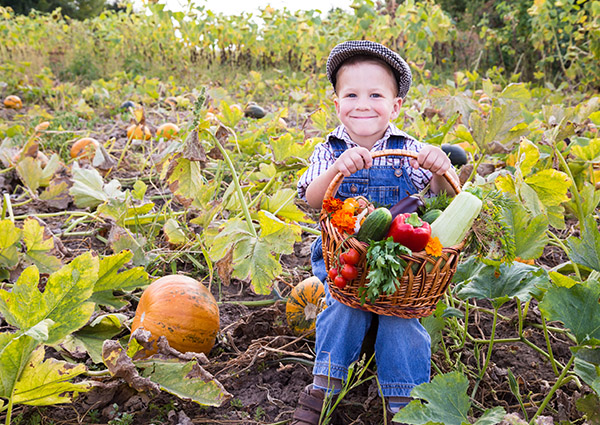
Fall Produce Guide: Incorporating Veggies into Kids Meals
Fall is the perfect time to take a step back, readjust schedules and focus on new healthy eating habits including boosting vegetable intake. Eating a variety of vegetables brings good health and may reduce the risk of many diseases including heart disease, high blood pressure and some cancers. Veggies are rich in vitamins and minerals including vitamins A and C, potassium, magnesium and folate. They also provide fiber, which children often lack, while aiding the digestive system.
Seasonal Produce Fast Facts:
- Seasonal produce is less expensive and at its peak of flavor and nutrient content.
- Seasonal fall vegetables that are popular with children include sweet potatoes, pumpkin, mushrooms, broccoli, acorn squash, butter lettuce and cauliflower. View a full list of seasonal fall produce at www.fruitsandveggiesmorematters.com
- Store potatoes, sweet potatoes and winter squash at room temperature. Keep broccoli, lettuce, cauliflower and mushrooms in the refrigerator in separate, perforated plastic bags and use within one to three days for the best quality.
Tips for Getting Started:
- Include vegetables at snack time. Keep grab-and-go veggies like baby carrots, cherry tomatoes, sliced cucumber, red pepper or celery sticks within easy reach. A baked potato sprinkled with low-fat shredded cheese and topped with salsa is an easy microwaveable snack.
- Get kids involved. Visit the supermarket and/or farmers market once a week, and let each child choose a new vegetable to try. Have them help prepare their chosen vegetable.
Worried about your food budget?Include vegetables with every meal and save by meal planning, watching for sales and by being careful with storage to keep produce fresh.
- Plan meals for the week. Use the supermarket flyer and website to find sales on canned and frozen veggies. Stock up during sales – a well-stocked pantry will make you less likely to run out for restaurant or take-out food, which may not include vegetables.
- Include fresh, frozen, canned and dried forms of vegetables.
- Fill half of the plate with vegetables. Reduce portion size of meat and protein foods, which tend to be more expensive.
For more information on seasonal vegetables and feeding healthy children including recipes, nutrition facts and more, visit:
www.fruitsandveggiesmorematters.com
www.produceforkids.com
www.poweryourlunchbox.com
www.mealtime.org





